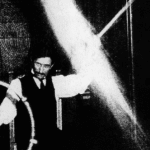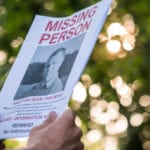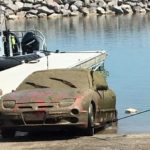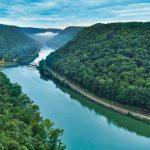 Creepy
Creepy  Creepy
Creepy  Technology
Technology 10 Scientific Breakthroughs of 2025 That’ll Change Everything
 Our World
Our World 10 Ways Icelandic Culture Makes Other Countries Look Boring
 Misconceptions
Misconceptions 10 Common Misconceptions About the Victorian Era
 Mysteries
Mysteries 10 Strange Unexplained Mysteries of 2025
 Miscellaneous
Miscellaneous 10 of History’s Most Bell-Ringing Finishing Moves
 History
History 10 Great Escapes That Ended Right Back in Captivity
 Weird Stuff
Weird Stuff 10 Fascinating Things You Might Not Know About Spiders
 Food
Food 10 Everyday Foods You Didn’t Know Were Invented by the U.S. Military
 History
History 10 Odd Things Colonial Americans Kept at Home
 Creepy
Creepy 10 More Representations of Death from Myth, Legend, and Folktale
 Technology
Technology 10 Scientific Breakthroughs of 2025 That’ll Change Everything
 Our World
Our World 10 Ways Icelandic Culture Makes Other Countries Look Boring
Who's Behind Listverse?

Jamie Frater
Head Editor
Jamie founded Listverse due to an insatiable desire to share fascinating, obscure, and bizarre facts. He has been a guest speaker on numerous national radio and television stations and is a five time published author.
More About Us Misconceptions
Misconceptions 10 Common Misconceptions About the Victorian Era
 Mysteries
Mysteries 10 Strange Unexplained Mysteries of 2025
 Miscellaneous
Miscellaneous 10 of History’s Most Bell-Ringing Finishing Moves
 History
History 10 Great Escapes That Ended Right Back in Captivity
 Weird Stuff
Weird Stuff 10 Fascinating Things You Might Not Know About Spiders
 Food
Food 10 Everyday Foods You Didn’t Know Were Invented by the U.S. Military
 History
History 10 Odd Things Colonial Americans Kept at Home
10 Plane Wrecks Throughout History That Are Still Missing
Malaysia Airlines Flight 370 is one of the most famous missing aircraft cases in recent history. However, other planes mysteriously had gone missing long before this infamous flight went awry. Here are ten lesser-known plane wrecks throughout history that are still missing.
Related: Top 10 Terrifying Facts About Airplanes
10 The Campbell Airship
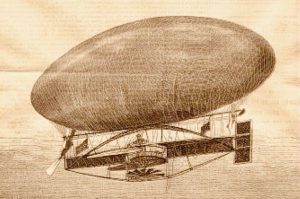
One of the oldest plane crashes dates back to the early days of flight, long before real planes had been invented. This particular aircraft, called the Campbell Airship, was actually a dirigible and was built by a man named Peter Campbell in the 1880s.
Unfortunately, as with many early flight attempts, this particular aircraft wasn’t a success. On July 16, 1889, a professor named Edward D. Hogan piloted the airship in a demonstration flight departing from New York City.
But that was the last that was ever seen of it. After leaving New York, the airship was last seen heading over the North Atlantic. Although the wreckage has never been found, it’s believed to have crashed near Atlantic City in New Jersey around 5:30 pm due to mechanical failure.
With an airship that large, you’d think it would be easy to find. However, the pilot and the remains of the aircraft disappeared, never to be seen again.[1]
9 Cecil Grace’s Airplane
Just seven years after the Wright brothers successfully built an airplane and flew it in 1903, a man named Cecil Grace, who was an early aviator, decided to enter the Baron de Forest competition. This competition promised to give £2,000 to whoever could make the longest flight from England to the rest of continental Europe. Several aviators had already tried and failed to win the prize, but Cecil Grace decided to throw his hat into the ring.
He took off from England on December 22, 1910, but quickly realized that the strong wind was going to be a problem. Not wanting to get into hot water, Cecil Grace landed his flight on the coast of France, had lunch, and got ready to head back to England.
However, after checking that he’d departed for the 40-minute journey back to England, no one heard a word from him. At first, there were hopeful reports that the pilot had landed somewhere, but on March 14, 1911, his cap and goggles washed up near Ostend, Belgium.
Little is known about what happened to the pilot, although his body was reportedly found later. As for the plane itself, we may never know where that resides.[2]
8 Albert Jewell’s Airplane
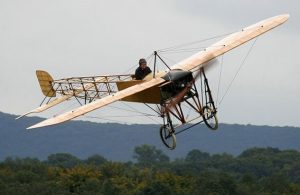
Albert Jewell was born in 1886 in the United States and was an aviator in the early 1900s. Jewell got a pilot’s license from the Aero Club of America in 1913. This was just six months before he would make his last fated flight.
In 1913, the New York Times organized an event called the American Aerial Derby, which was an airplane race made to commemorate the tenth anniversary of Orville Wright’s first flight. The race would cover a 60-mile (96-kilometer) loop that started and ended in Staten Island.
As a young aviator, the idea of this competition greatly appealed to Albert, and he signed up to make the flight. He entered the competition flying a Moisant-Blériot monoplane and took off from Stanton Island with high hopes.
However, it seems that his plane was blown out to sea during the flight. The last person to see him was a fishing vessel captain, who spotted him flying somewhere off the southern part of Long Island. This was the last anyone saw of the poor pilot, and neither Albert nor his plane wreckage was ever recovered.[3]
7 Amelia Earheart’s Lockheed Electra 10E
In 1937, Amelia Earhart and her navigator, Fred Noonan, set off from Oakland, California, in a Lockheed Electra 10E. They had a goal to fly around the world on a groundbreaking trip.
The first part of the flight went well, with the pair landing in New Guinea less than a month later. They’d already flown 22,000 miles and only needed to fly another 7,000 in order to make it back home to Oakland.
Unfortunately, making it home didn’t seem to be on the table for Earhart and her copilot. The two took off from Lae and headed for a small island in the Pacific Ocean, where they planned to refuel before heading back to the U.S. However, they never made it. The pair went missing somewhere over the Pacific Ocean and, after an extensive air and sea search, were finally declared dead on January 5, 1939.
Although no one knows what happened to these young aviators, the standing theory is that they ran out of fuel and crashed into the ocean. Other theories have emerged, including one saying the plane crashed near Nikumaroro Island and Earhart was stranded on the island. In 2022, researchers hoped to confirm a metal piece of wreckage found in 1991 was, in fact, part of her plane through advanced imaging technology.
Regardless of what happened, however, her plane wreck has never been definitively found, and the disappearance remains a mystery today.[4]
6 Flight 19
Flight 19 was a group of torpedo bombers who set out on a United States Navy training flight on December 5, 1945. There were 14 aviators in total who participated in the flight, and for some reason, all of the crew members lost contact with their base while flying over the Bermuda Triangle.
After realizing their airmen had gone missing, the U.S. Navy launched a rescue mission, sending out a Mariner flying boat to look for them. This, too, however, went missing and was never heard from again.
Although neither the plane wreckage nor the crew was ever found, there have been a few false alarms. From 1986 until 2015, various plane wrecks were found, but all of them were attributed to different crashes. Perhaps further investigations will help turn up the missing wrecks someday in the future.[5]
5 The Patrie
The Patrie was a French airship that resembled a dirigible. It was built to be a military airship for the French army. Although the airship enjoyed several flights, in 1907, disaster befell the aircraft.
The airship, which was moored in Souhesmes, France, was torn loose from her moorings in a storm in November 1907. Hundreds of soldiers rushed to restrain the ship, but their efforts were in vain—the ship floated away and drifted out of sight.
That wasn’t the last time the ship was seen, however. Sightings were reported over the following days in the English Channel and lastly in Belfast. Eventually, however, she drifted out over the Atlantic Ocean, where she was never seen again.
Despite search efforts made to recover the airship, the plane was lost for good after her final sighting. Even today, the ship has not been recovered, and it’s assumed to be lost somewhere at the bottom of the Atlantic Ocean.[6]
4 Canadian Pacific Air Lines Douglas DC-4
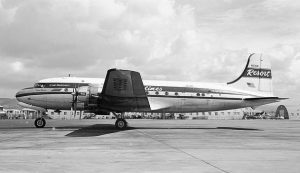
The Vancouver Douglas DC-4 was an airplane operated by Canadian Pacific Air Lines. On July 21, 1951, the plane took off from Vancouver International Airport on Flight 3505 with an initial layover in Anchorage Airport.
All seemed to be well, and the flight was on schedule for the first part of the journey. However, as the plane neared Alaska, heavy rains and ice began to pick up. Still, the plane made no distress signals, and everything seemed to be fine.
However, when the airplane had still not landed in Alaska two hours after it was due to show up, the U.S. and Canadian Air Forces launched a search. The search was unsuccessful, however, and eventually had to be called off. Neither the passengers nor the airplane were ever found, and experts believe that the wreckage was destroyed in the crash.[7]
3 Gustav Hamel Wreck
Gustav Hamel was a British aviator who piloted planes during the early days of flight. However, it seems his passion got him into a lot more trouble than he bargained for.
On May 23, 1914, the young aviator was flying over the English Channel in a Morane-Saulnier monoplane. The plane was a new addition to the pilot’s collection, and he was planning to use it to compete in the Aerial Derby later that day.
Tragically, Gustav would never make it to the derby at all. He was spotted flying over Calais, France, on what was supposed to be a twenty-five-minute flight. However, strong winds picked up and blew Gustav off course.
When the young pilot didn’t show up in the expected amount of time in England, a search party was lost. After just 48 hours of searching, however, the pilot was declared dead. Although a body that’s thought to be the pilot’s did later show up, the aircraft wreckage has never been found.[8]
2 Trans Tasman Flight Disappearance
Many a plane disappearance has happened due to pilots attempting to push limits, break records, or win competitions. One such fateful flight is that of Lieutenant John Moncrieff and Captain George Hood.
The two airmen were determined to make the first trans-Tasman flight departing Australia and landing in New Zealand, and in 1928, they set out to do so. On January 10 of that year, the two airmen departed from Sydney at around two o’clock in the morning.
For the next 12 hours, the two men sent radio signals from their aircraft. However, despite the eager fans awaiting them in New Zealand, the plane never landed. Eventually, a search party was launched to look for the missing aviators. However, their efforts were fruitless, and neither the airmen nor their plane have ever been located.[9]
1 Dragonfly ZK-AFB Disappearance
On February 12, 1962, a pilot named Brian Chadwick and a group of four Australian passengers took off from Christchurch, New Zealand, toward Milford Sound.
Despite the fact that the weather was looking a bit peaky, the pilot decided that he could make his way down to the sound without any issues. However, it seems that he couldn’t have been more wrong.
The plane, which was scheduled to arrive at just past 12:30 pm in Milford Sound, never showed up, and the airport control at Milford Sound reported it missing. What then ensued was the largest aerial search in New Zealand’s history, involving 34 aircraft that flew for more than 400 hours total.
Despite this massive search, however, the plane was never found. Today, there are still a few eccentrics who have kept up the search for the missing plane, although neither it nor much evidence has ever been found.[10]

